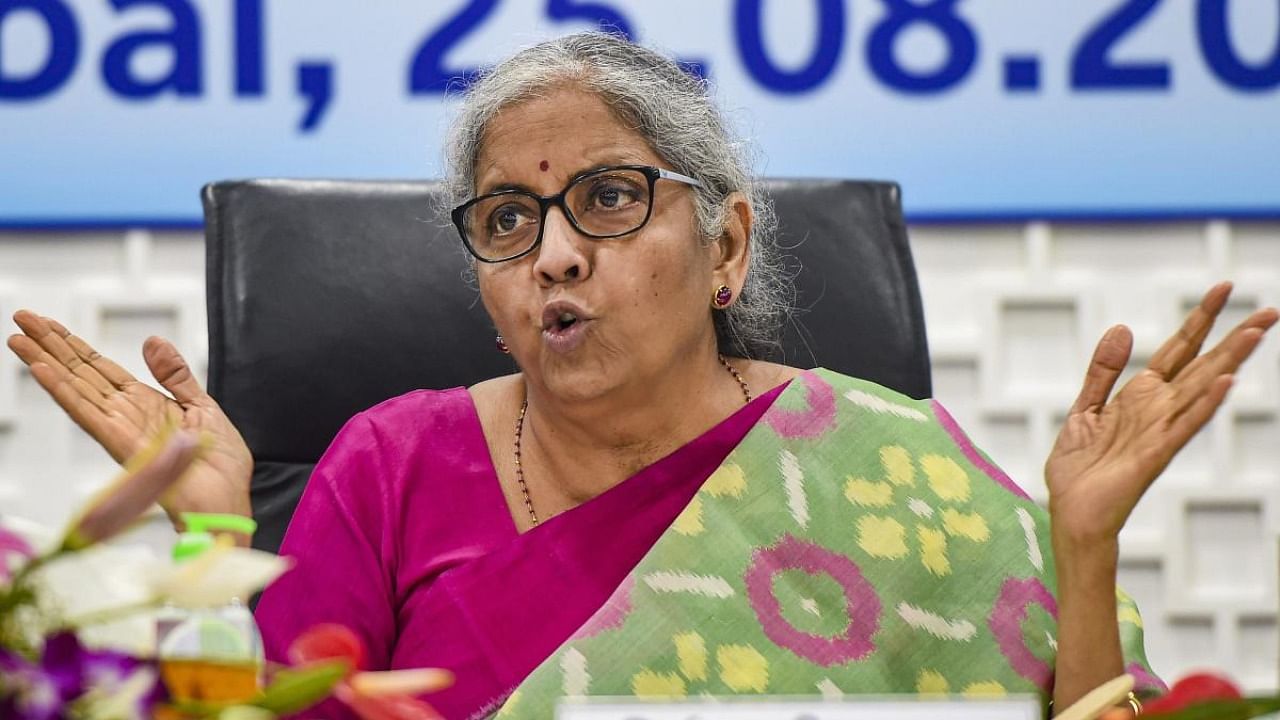
India’s annual Union Budget in February has become a day that is closely observed by many economic and political commentators, when the Modi government is known to have tried to either correct some ‘wrongs’ from the past year or give a handful of ‘carrots’ and ‘sweets’ to poll-bound state demographics with an eye on votes.
In either of these scenarios, there remains a sharp divergence between what’s promised and what’s delivered. For example, last year’s Budget outlays by Finance Minister Nirmala Sitharaman sought to offer an optimistic ‘pro-growth’ vision to the government’s long-term plan to kickstart (domestic) private investment through increased government-enabled capital spending in the hope of reviving ‘animal spirits’ and ensuring economic recovery across sectors.
According to the recent CMIE data on year-to-year growth trends, there were some positive signs in manufacturing and mining activities in 2021. But the overall situation still looks grim, particularly in areas of agriculture, industrial production and services. And now, with the third wave, a more adverse impact is likely on the performance of almost all these sectors in the coming quarters. Going forward, it is also important to focus growth diagnosis more on the sequential aspect of performance across the year than overemphasise year-to-year data alone.
Still, the Modi government’s fiscal priorities, based on the recent Union Budgets, have continued to miss the trick on the puzzling unemployment-underemployment challenge, entrenched in crises of low social spending in areas that could help create a robust safety net for lower-middle-class workers. The government’s budgetary focus to help the ‘poor’ even during the pandemic remained focused on providing ‘food’ through a higher subsidy bill. Despite higher subsidies on food and fertilisers, most other measures announced in support of those affected were ‘stimulus’ steps to create means for ‘liquidity’ in the market, in facilitating borrowings for affected small and medium enterprises. Nothing was done to increase the household disposable income of those deeply affected by the twin shocks.
For example, if one closely assesses the outlays of the three versions of the Atmanirbhar package announced, most spending (say, 55% in Atmanirbhar Bharat 3.0 package) was aimed and targeted solely for industrial infrastructure, manufacturing via the PLI scheme (Production Linked Incentive Scheme) that yielded little gains in actual growth performance, and at the same time, little was done on job creation (Atmanirbhar Bharat Rozgar Yojana getting less than 2% of the announced package).
For farmer-centric allocations too, the picture of proposed outlays vs actual disbursements looks murky. Even before the pandemic, the shortfall between budgeted and actual expenditure claims was roughly 42% for schemes like PMKSY (Pradhan Mantri Krishi Sinchai Yojana), accentuating a further erosion in trust between farmers and the Union government.
Employment challenge
For Budget 2022, the biggest macro-fiscal and economic challenge for the government is on creating good quality jobs for those joining the workforce. Acknowledging the issue would be the first step for the government, but correct diagnosis of the issue at hand is equally important.
As Mahesh Vyas recently pointed out, “Unemployment rate is not India’s most important labour market indicator. The unemployment rate was 7.9% in December 2021. This does not mean that the remaining 92.1% were employed. It does not even mean that 92.1% of all working-age people were employed.” Vyas is right here.
Amid the many concerns in a disjointed labour market structure within India, one of them is how most adults do not clearly express a desire to work to earn wages or profits. That makes traditional metrics less significant in interpreting and studying the problem. The employment-population ratio becomes a more useful indicator, measuring the ratio of the employed to the total working-age population.
India’s pre-pandemic employment-population ratio of 43% was lower than the global rate (55%) in 2020, according to World Bank Data. The employment rate in Bangladesh is 53% and in China around 63%. According to CMIE’s estimate, India’s employment-population rate is below 38%. What this reflects is a chronic crisis of ‘good quality jobs’ in/across India for the working-age population that is entering the labour force every year (rate of which has continued to be high even during the pandemic).
At the same time, in rural India, the demand for MGNREGA work (seen as a fallback option as a safety net) still remains high despite the resurgence of some economic activity from the second half of 2021. Inadequate MGNREGA budgets have made it difficult for states to provide adequate employment to those in rural areas who have less or no alternative employment opportunities.
Where the finance minister and the Modi government would need to get their act straight in defining their allocative spending priority this upcoming Budget would be therefore on two things: One, focus the design of our fiscal policy towards creating good quality jobs through incentives across sectors and do so over a three-to-five-year plan. Second, creating well-financed job-based social security nets by supporting increased outlays to MGNREGA in rural areas and creating an urban version of the National Employment Guarantee Scheme (discussed at length here) in cities for temporal relief to those struggling to find employment in both rural-urban areas.
At the macro-level, if only 38% of the working-age population in India is employed and only another 3% wants to work but cannot find work (unemployed as per cent of the population), then implicitly, as Vyas points out, 59% of the working-age population does not want to work.
The government’s ‘pro-growth’ outlook accompanied by a vision of ‘atmanirbharta’ ultimately lies in finding employment for not only the 3% who are unemployed but also a significant chunk of the remaining 59% of the population. To reach the global employment rate standards, India needs to employ an additional 187.5 million people every year. Given the current employment of the order of 406 million, that is a tall order.
(The writer is Director, Centre for New Economic Studies, Jindal Global University)